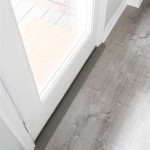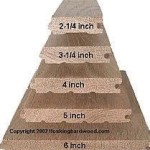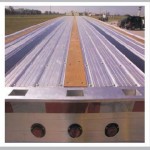Best Underlayment For Laminate Flooring In Basements
Basements, often considered unfinished spaces, are increasingly being transformed into functional living areas. Laminate flooring, known for its durability, affordability, and ease of installation, is a popular choice for basement transformations. However, the success of a laminate floor in a basement depends heavily on the underlayment used. Underlayment serves as a crucial buffer between the subfloor and the laminate, providing insulation, moisture protection, and sound dampening. Choosing the right underlayment ensures a long-lasting, comfortable, and aesthetically pleasing laminate floor.
Understanding Basement Challenges
Basements present unique challenges for flooring. They are susceptible to moisture issues due to potential leaks or humidity. The concrete subfloor can be uneven, leading to an unstable base for the laminate. Additionally, basements are often prone to sound transmission, which can be amplified by a hard floor. Therefore, selecting the right underlayment for a basement is crucial to address these challenges and ensure a successful laminate floor installation.
Types of Underlayment for Basement Laminate Flooring
Several types of underlayment cater specifically to the demands of basement flooring. Each type offers distinct benefits and considerations:
1. Foam Underlayment
Foam underlayment is a common and cost-effective option. It consists of closed-cell foam, offering excellent insulation and sound dampening properties. Foam underlayment provides cushioning underfoot, enhancing comfort. However, foam underlayment is not as moisture-resistant as other options and may not be suitable for overly humid basements.
2. Moisture-Resistant Underlayment
Specifically designed for damp environments, moisture-resistant underlayment includes a moisture barrier. This barrier is typically made of polyethylene or a similar material, preventing moisture from reaching the subfloor and potentially damaging the laminate. Moisture-resistant underlayment is an excellent choice for basements prone to humidity or leaks.
3. Cork Underlayment
Cork underlayment offers a combination of moisture resistance, thermal insulation, and sound absorption. Cork is naturally resistant to moisture and mildew, making it suitable for damp basements. It also provides excellent thermal insulation, keeping the basement warmer during colder months. Cork underlayment offers a natural and sustainable option for eco-conscious homeowners.
4. Rubberized Underlayment
Rubberized underlayment is known for its exceptional durability and sound dampening capabilities. This type of underlayment is typically made of recycled rubber, offering excellent resilience against wear and tear. Rubberized underlayment effectively reduces noise transmission, making it an ideal choice for basements intended for living areas or home offices.
Key Factors to Consider
When choosing underlayment for a basement laminate floor, several factors should be considered:
1. Moisture Levels
The level of moisture in the basement is a primary consideration. For damp or humid basements, opt for moisture-resistant underlayment. Foam underlayment may suffice for drier basements but is not recommended for areas prone to moisture.
2. Sound Reduction
If sound dampening is a priority, rubberized underlayment offers the best noise reduction. Cork and foam underlayment also provide sound insulation, but to a lesser extent. Consider the intended use of the basement space when selecting underlayment for sound reduction.
3. Budget
Underlayment costs vary depending on the type and thickness. Foam underlayment is typically the most affordable option, while cork and rubberized underlayment can be more expensive. Consider your budget and prioritize the features most important for your basement floor.
4. Insulation
Underlayment contributes to thermal insulation, making the basement more comfortable throughout the year. Cork underlayment offers excellent thermal insulation, followed by foam and rubberized underlayment. Consider the climate and desired temperature regulation when selecting underlayment.
5. Subfloor Condition
The condition of the subfloor influences the underlayment choice. For uneven subfloors, thicker underlayment can help level the surface. However, excessive unevenness may require subfloor leveling before installing laminate flooring.
Choosing the right underlayment for your basement laminate floor is crucial for a successful and long-lasting installation. By considering the factors discussed above, you can select the best underlayment to ensure a comfortable, durable, and aesthetically pleasing floor that meets your specific needs.

Best Underlayment For Laminate Flooring On Concrete

What Is The Best Underlayment For Laminate Flooring Options

Underlayment Buyer S Guide
The Best Underlayment For Every Type Of Flooring

What Is The Best Underlayment For Laminate Flooring Options

Types Of Laminate Flooring Underlay Which To Choose

All In One Single Dimple Subfloor Sual

Top 4 Underlayment Options For Your Floors Aa

Best Luxury Vinyl Flooring Allfloors Trade Centre

Underlayment Buyer S Guide
Related Posts








